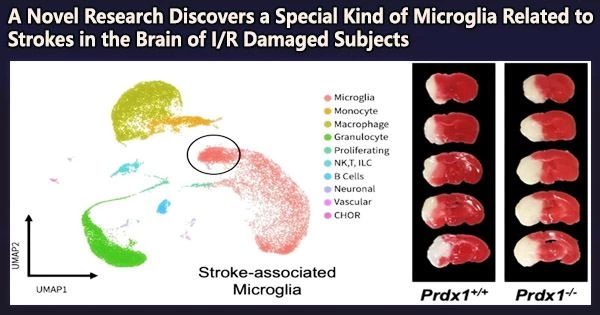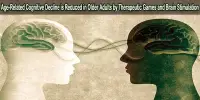A stroke, also known as a cerebrovascular accident (CVA), is a medical emergency that occurs when blood flow to the brain is interrupted, resulting in brain cell damage or death. Symptoms of stroke can include sudden numbness or weakness in the face, arm, or leg (usually on one side of the body), confusion, trouble speaking or understanding speech, trouble seeing in one or both eyes, difficulty walking, dizziness, loss of balance or coordination, or a severe headache with no known cause.
A study team connected to UNIST has discovered a brand-new variety of microglia in the brain of ischemia/reperfusion (I/R) injured patients that are linked to stroke. Professor Sung Ho Park and his research team in the Department of Biological Sciences at UNIST, in collaboration with a research team, led by Professor Goo Taeg Oh from Ewha Womans University, have led this breakthrough.
Microglia, the primary immune cells in the central nervous system (CNS), are known to eliminate unwanted germs and debris and remove dying neurons. The research team identified a novel subclass of microglia in this study, called stroke-associated microglia (SAM), with improved antioxidant capacity and markers similar to those of disease-associated microglia (DAM).
The research team showed through animal studies that the presence of the usual antioxidant gene, Peroxiredoxin-1 (Prdx1), protects against acute I/R injury and is necessary for SAM activation and the subsequent decrease in microglial cell death and inflammatory responses.
Prdx1-dependent SAM may be a potential biomarker and therapeutic target for protecting microglial function and treating brain I/R injury. Although this new cluster will require further study, our findings provide a new perspective that Prdx1-mediated microglial heterogeneity is important in ischemic stroke.
Professor Sung Ho Park
In addition, after performing transient middle cerebral artery occlusion (tMCAO) surgery to induce ischemic stroke in mice, the research team found that Prdx1−/− mice were more severely injured by acute I/R injury, as confirmed by TTC staining, neurological deficit scores, motor tests, and the survival rate, indicating that Prdx1 has a protective function.
“In this study, we have, for the first time, identified a specialized and distinctive type of microglia with enhanced antioxidant function in stroke mice,” says Professor Park. “Prdx1-dependent SAM may be a potential biomarker and therapeutic target for protecting microglial function and treating brain I/R injury,” He adds, “Although this new cluster will require further study, our findings provide a new perspective that Prdx1-mediated microglial heterogeneity is important in ischemic stroke.”
This study has been jointly participated by Wonhyo Lee, a doctoral researcher within the Department of Biological Sciences at UNIST and Sinai Kim, a doctoral researcher within the Department of Life Sciences at Ewha Womans University, as first authors.
Their findings have been published in the August 2022 issue of Redox Biology. This study was carried out with the support of the National Research Foundation of Korea (NRF).
















